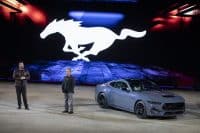
The Toyota Motor Corp. (NYSE: TM) Prius has posted global sales of over 8 million since it was introduced in 1997. Sales rose each year through 2014. That has changed. Sales faltered in 2015, with Prius sales in the United States down 10.9% to 184,794. The figure likely will fall again this year. No one knows for certain why this happened.
The two primary arguments for the decline are that the Prius has a growing number of competitors and that falling gasoline prices make hybrids less attractive. Or perhaps it’s some of both.
The average price for a gallon of regular has dropped from close to $3 two years ago to under $1.90. However, the base version of the Prius gets over 50 miles per gallon, and it is priced at $24,200 for the entry model. Who does not want to save money on gas, even if gas is cheap? Perhaps people don’t care about the few hundred dollars that an average driver would save.
Toyota has done a good job defending the Prius from competition by introducing new models. Among the Prius models are the Eco, which gets even better mileage than the base version. Toyota offers more expensive models with a large array of high-tech features. Additionally, Toyota has a low-priced model called the Prius C. The small fleet is broad enough to compete with any other line of hybrids.
[ims_survey]
The tie breaker in the Prius problem argument is simple. Its most direct competitor, Ford Motor Co.’s (NYSE: F) C-Max, had sales of 21,768 last year, a drop of 21.1%. Priced close to the Prius, and with Ford’s marketing muscle, its hybrid product sales are in reverse.
It’s Your Money, Your Future—Own It (sponsor)
Retirement can be daunting, but it doesn’t need to be.
Imagine having an expert in your corner to help you with your financial goals. Someone to help you determine if you’re ahead, behind, or right on track. With SmartAsset, that’s not just a dream—it’s reality. This free tool connects you with pre-screened financial advisors who work in your best interests. It’s quick, it’s easy, so take the leap today and start planning smarter!
Don’t waste another minute; get started right here and help your retirement dreams become a retirement reality.
Thank you for reading! Have some feedback for us?
Contact the 24/7 Wall St. editorial team.




